How Long Does A Rebuilt Alternator Last? My 2024 Answer
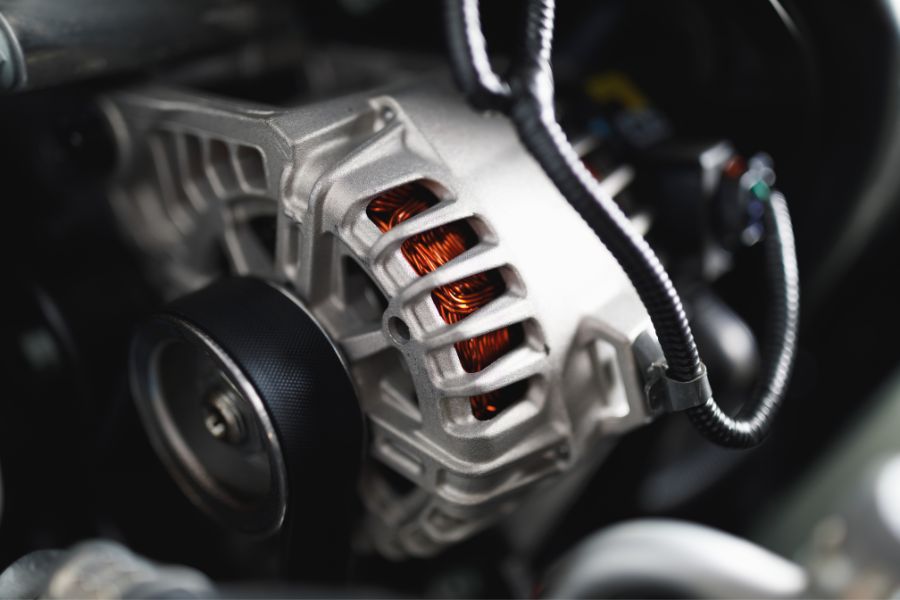
Hi there. I’m Isaac V. Mace the founder of Phoenix Car Mag. I’m a seasoned car enthusiast and experienced vehicle professional. I’ve been dealing with various vehicles and resolving their issues for many years so all my gathered information came from real-life encountered issues. Today I’m here to talk about the underrated but crucial component called the alternator.
Most daily drivers or even car enthusiasts tend to pay attention to flashier parts of the vehicle without knowing much about the unsung heroes like the alternator. They realize the role of an alternator once they face problems on the road. I’m going to tell you how long a rebuilt alternator lasts.
The alternator is there to keep the vehicle’s battery charged and empower the electrical system. In case it wears out, most people head to recharge it as this is a more cost-effective solution than purchasing a new one.
So let’s see how long a rebuilt alternator last? If the alternator is rebuilt excellently and all of the worn-out parts are replaced, it lasts for around 60,000 to 100,000 miles (or roughly 5-8 years). The determining factor isn’t the distance but the quality of rebuilding. A poor quality rebuild might fail much sooner.
You might also enjoy: I Found 10 Reasons Why Your Car Battery Smoking [2023]
How Long Does A Rebuilt Alternator Last? My 2024 Answer
Answering this puzzling question is not a simple thing to do. I encountered lots of cases in my repair shop and Phoenix Car Mag found out the rebuilt alternator’s life is dependent on some factors.
If the alternator is rebuilt excellently and all of the worn-out parts are replaced, it lasts for around 60,000 to 100,000 miles.
The determining factor isn’t the distance but the quality of rebuilding. A properly rebuilt alternator can deliver as high performance as a new one. I experienced it before.
Once I was trying to rebuild an alternator to restore a classic vehicle. At first, I was hesitant but once I’ve done it, I was surprised by its excellent performance and efficiency on several road tests.
Trust me regular maintenance plays a key role in the alternator’s lifespan. Go for checkups regularly to inspect the alternator for signs of wear and check its proper connections. In this way, you can avoid premature wear and tear.
I saw lots of cases where the alternator was under excessive strain due to aftermarket sound systems or lighting.
These factors lead to premature wear and tear. Moreover, the additional impactful factor in the alternator’s lifespan is the driving condition.
Cars that are driven in demanding environments like hills ld the ones that are kept in extremely hot or cold regions, face the alternator failure sooner. And of course, you know that once the alternator malfunctions, the whole vehicle’s electrical system performance is affected.
Due to these variable factors for each vehicle, we may not be able to tell the exact lifespan of a rebuilt alternator. But we can make some considerations to extend its life. In opposition to many driver’s ideas, a well-maintained, suitably used, and properly installed rebuilt alternator lasts for a relatively long period and it’s a wise and cost-effective choice.
You should be attentive to the balance of quality maintenance and usage. No matter if you are a daily driver, occasional traveler, or a camper. You should know this key information about the alternator to prevent road issues and save your time and money.
You might also enjoy: Engine Knock on Startup Then Goes Away – My 7 Prevention Tips
Understanding Alternators: What They Do and Why They’re Crucial
As far as I know, each car owner or car enthusiast should know that the alternator isn’t similar to other car components. It’s the heart of your vehicle’s electrical system.
The alternator is a power generator and it transfers the engine’s electrical energy to mechanical energy. Your battery keeps its charge with this energy. Also, this mechanical energy empowers all electric components of the vehicle. It ranges from dashboard lights to steering wheel and air-conditioning.
As soon as you start the ignition the alternator starts working. While the battery provides initial power to the vehicle, the alternator uses the engine’s energy to support the battery and ensure it’s not drained. The electrical system’s heart, the alternator, pumps energy to all of the components and ensures their proper functionality. To provide this energy, the rotor of the alternator circulates in the coil and creates alternating current (AC).
The AC changes to direct current or DA. It’s the current that empowers the vehicle’s electrical components.
The alternator is a self-sustainable component. It has the role of empowering electrical components and also keeps the battery recharged for the next start. In case of alternator malfunctions, your battery drains and puts you in trouble.
We can’t brief the alternator’s functions just in recharging the battery. It’s worth noting that it impacts the vehicle’s whole health. A failing alternator can lead to a range of issues from a dimming light to complete electrical failure.
Remember a domino? As a result of the alternator’s failure everything malfunctions. I faced this incident once due to the alternator’s failure, I first witnessed a performance drip but after a short period, I experienced a complete electrical shutdown.
Lastly, you’d better stop undereating the alternator and be attentive to it. Because it’s a crucial and determining component in your vehicle’s proper function and smooth operation.
You should be familiar with its role and functions to be able to prevent potential issues. Believe me, as a seasoned automotive expert that once you maintain your alternator in its best condition, you have peace of mind and experience relief on the road.
Signs of Alternator Failure: Recognizing the Symptoms
Understanding the signs of alternator failure is quite crucial. They include lights flickering, a burning smell inside the cabin, malfunctioning accessories, dead batteries, hot wires, and grinding noises. These are telltale symptoms.
The most noticeable sign is flickering lights. The lighting system’s power is provided by the alternator. Alternator fluctuation causes the lighting intensity fluctuation. So the clear sign of malfunctioning alternator is the sign of alternator failure.
The dead battery also shows the alternator issue. The alternator’s task is to ensure the battery is charged and not drained. If my new battery drains frequently it’s a telltale sign of malfunctioning alternator.
In case of a malfunctioning alternator, electrical accessories won’t function properly or work slowly. Inadequate alternator power leads to sluggish operation of power windows and infotainment system malfunctions.
The grinding noises under the hood refer to alternator issues as well. This sound comes from worn-out bearings or other components malfunction of the alternator. The rubber or burning smell is also an indicator of an alternator issue as the alternator is overheating.
The direct indicator of a failing indicator is the dashboard warning light. As modern vehicles have sophisticated systems to monitor the alternator’s performance, their check light will be triggered by the alternator’s improper function.
If you recognize the malfunctioning alternator symptoms, you can save yourself from on-road problems and being stranded. Consider regular maintenance and alternator’s timely check to provide yourself with a smooth driving experience.
You might also enjoy: What Happens If You Unplug Idle Air Control Valve [2024] – My Personal Experience
Maximizing the Life of Your Rebuilt Alternator: Proven Maintenance Strategies
A rebuilt battery maintenance is a crucial factor in automotive health. I learned many key factors of car maintenance during my long-term experience working at Phoenix Car Mag. Most people often make mistakes and ignore regular check-ups so they don’t detect the early signs of wear.
A regular inspection is a good way to visually check for any signs of damage. Damage signs include loose connections or frayed wires. By doing this you can detect issues in their early steps.
Second, you should ensure the alternator isn’t overworked. It’s a big mistake to overload the car’s electrical system with several aftermarket systems like sound systems. The alternator will be under excessive strain by adding high-performance audio systems and lighting.
You should also be attentive to the serpentine belt. A malfunctioning or worn-out one compromises the alternator’s function. Consider inspecting the belt in regular check-ups as it affects the alternator’s efficiency.
To extend the alternator’s longevity you’d better keep the battery healthy. In case of a malfunctioning battery, the alternator has to work harder which leads to premature wear.
In brief, you should be attentive to early wearing signs like dimming lights or unusual noises that come from under the hood. Detecting them saves you from lots of on-road headaches and problems.
To extend your alternator’s lifespan you should stick to regular check-ups, keep components like a serpentine belt and battery healthy, and detect issues in their early steps. Despite being simple, these factors helped me a lot in car maintenance.
Navigating the Alternator Replacement Journey: A Personal Guide to When and How
As a car specialist, I happened to replace the alternator many times. It’s not a complex process but it requires high precision and good use understanding of your vehicle’s system. The mistake that you might make in this field is the incorrect diagnosis. Due to its similar signs to battery malfunction people often misunderstand it.
First of all, you should understand when to change the alternator. Signs of a malfunctioning alternator are dimming lights and unusual noises but it’s wise to make sure these symptoms are due to the alternator itself. You’d better use a multimeter to test the alternator’s power output and decide whether it needs to be replaced or not.
After the diagnostic, I had time to choose the best alternator.
You should choose the one that fits your vehicle’s specifications and meets its needs. I’ve seen many cases where the wrong alternator choice led to electrical imbalance and further damage.
The replacement process isn’t complex. It involves disconnecting the battery first. You should consider safety considerations in the replacement process. Then you should remove the alternator’s connector and serpentine belt.
Once you installed the new alternator, be attentive to secure and properly fastened connections.
The most frequent mistake during the alternator replacement process is the incorrect belt tension. The belt-tightening should be done in a way that does not slip but also doesn’t put excessive strain on the alternator. You’d better double-check the belt tension after the installation process.
Lastly, to check the new alternator’s functionality turn on the car and view its charging condition. To ensure your proper and correct installation, check the dashboard for warning lights and be attentive to hear potential unusual noises.
These steps came from my real-life experiences that helped me several times to maintain my vehicle’s electrical system health. While you can go for DIY consider consulting a professional in case you’re hesitant.
You might also enjoy: Power Window Fuse: Location + Ultimate Guide [My 2024 Update]
Conclusion
Lastly, I had a long journey in the automotive industry and I gathered valuable knowledge in this way. My king joinery was both interesting and worthy. We can’t neglect the crucial role of the alternator in a vehicle’s performance. We should understand its role, recognize its malfunctioning symptoms, and understand to proper timing of its replacement. You can ensure your vehicle’s smooth performance in this way.
I can’t emphasize more on regular maintenance. You should be attentive to any wear signs and address them promptly. No matter your alternator is new or a rebuilt one; keep an eye on its performance to give yourself a smooth, reliable, and safe driving experience.
About alternator replacement, keep in mind that you should understand its necessity first. The next steps involve choosing the proper alternator type and correct installation.
If you’re a daily driver or just a car enthusiast, you shouldn’t ignore the crucial role of the alternator.
A healthy alternator reflects the whole vehicle’s electrical health. Keep the mentioned factors in mind to ensure your vehicle’s overall health and avoid any issues and headaches on the road. In the automotive world, you should properly understand the empowering role of the alternator.
FAQs
-
How long will a rebuilt alternator last?
As I’ve seen in my real-life cases, a rebuilt alternator lasts for 60,000 to 100,000 miles. However, you shouldn’t ignore the impact of rebuilt quality and the vehicle’s maintenance. You can expect higher mileage from a well-rebuilt and properly maintained alternator.
-
How reliable is a rebuilt alternator?
A well-rebuilt alternator with high-quality parts is a reliable component. Regular maintenance is the key factor of its proper functionality. I encountered many cases in which a rebuilt alternator worked as well as a new one.
-
Can an alternator last 15 years?
It’s possible but isn’t common. The vehicle that’s under optimal driving conditions with minimal aftermarket services overload may last for 15 years. So in case of proper maintenance and care, everything is possible.
-
Can an alternator last 200,000 miles?
It’s quite impossible thing to happen. Alternators start wearing out before reaching 15p miles, especially if they’re under normal to heavy performance.
-
Is it better to buy a new or rebuilt alternator?
You should consider your budget and requirements. A new alternator can provide a high performance and warrantied reliability. However, the rebuilt alternators are the same in case they’re rebuilt properly and with higher parts. A rebuilt alternator is the more cost-effective option that satisfied me in many situations.
-
Can a brand-new alternator be bad?
Yes. There’s always an exception even for reputable brands. Once I faced a new alternator that had some issues from the first moment. To prevent potential issues, consider checking the alternator’s proper function after installation.
-
How often should an alternator be replaced?
As it depends on performance and maintenance, we can’t tell an exact time for that. So you should go for the alternator replacement as soon as you witness it’s wearing signs. They include flickering lights, low battery performance, unusual noises fie the engine, and more significantly the warning check light. These symptoms usually show up after about 5 to 10 years.


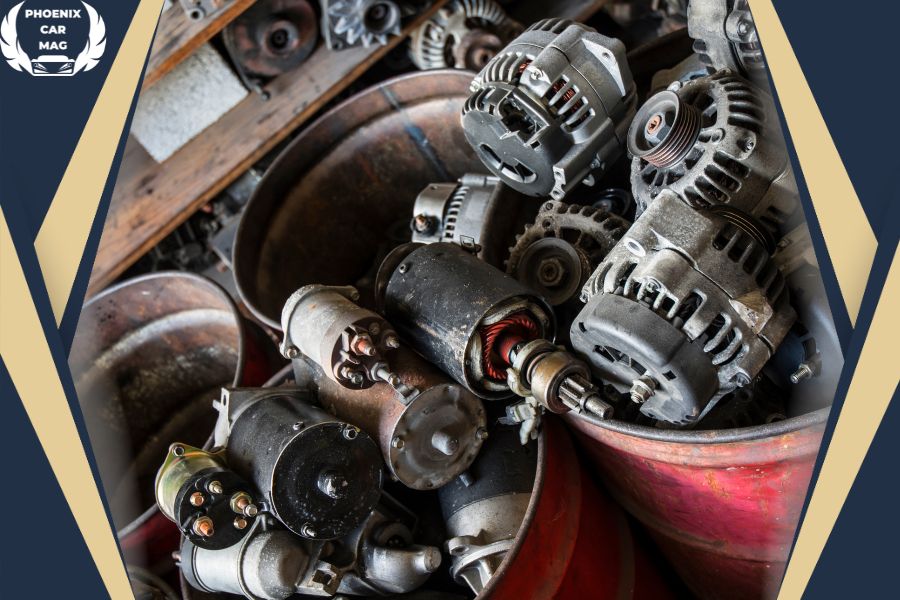
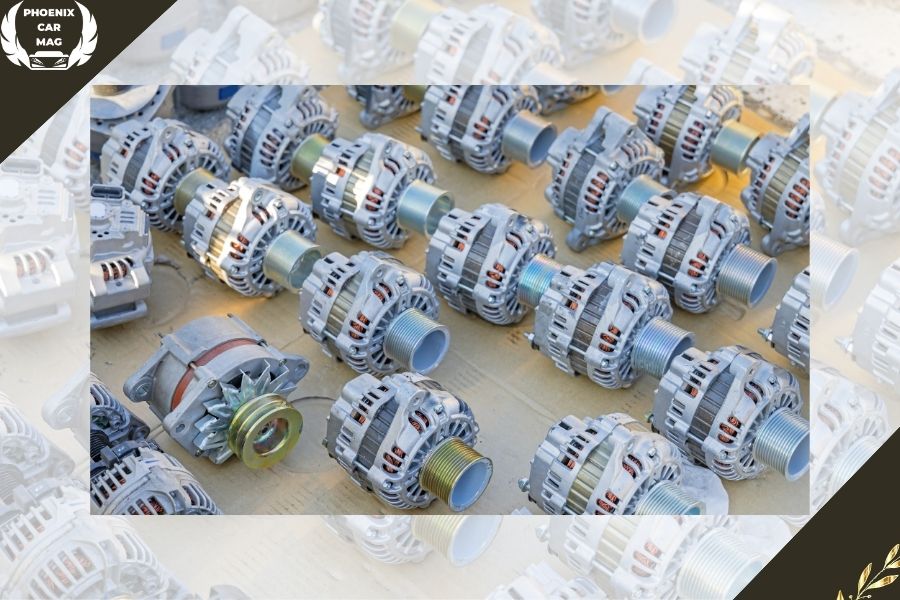
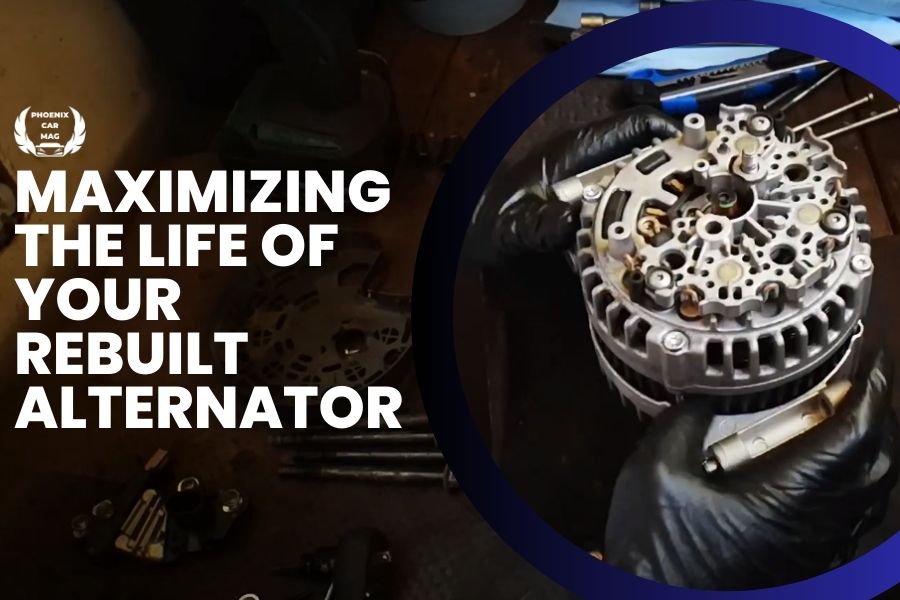
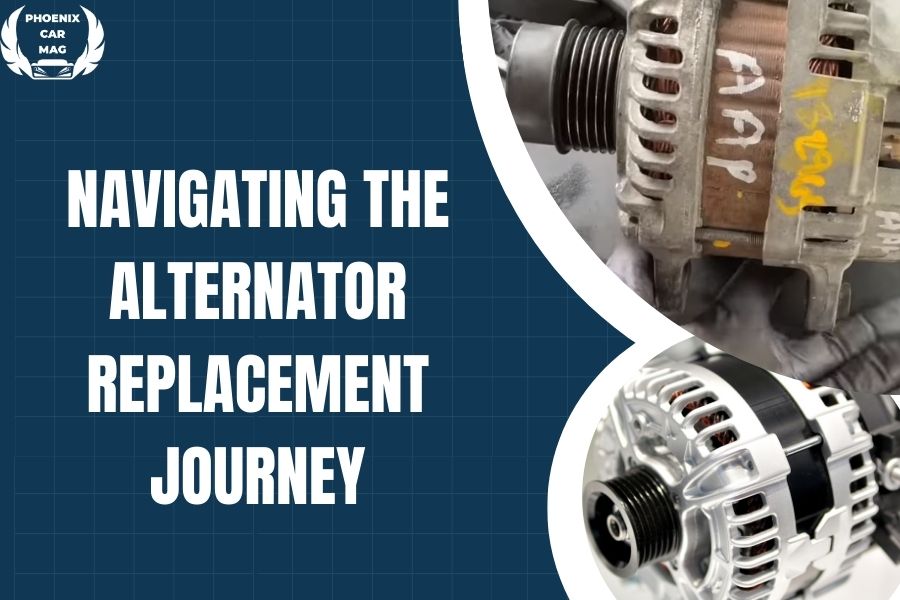

![Brake Fluid Change: Costs + Signs + Everything [2024]](https://phoenixcarmag.com/wp-content/uploads/2024/01/Brake-Fluid-Change-Costs-Signs-Everything-2024-2-308x180.jpg)

